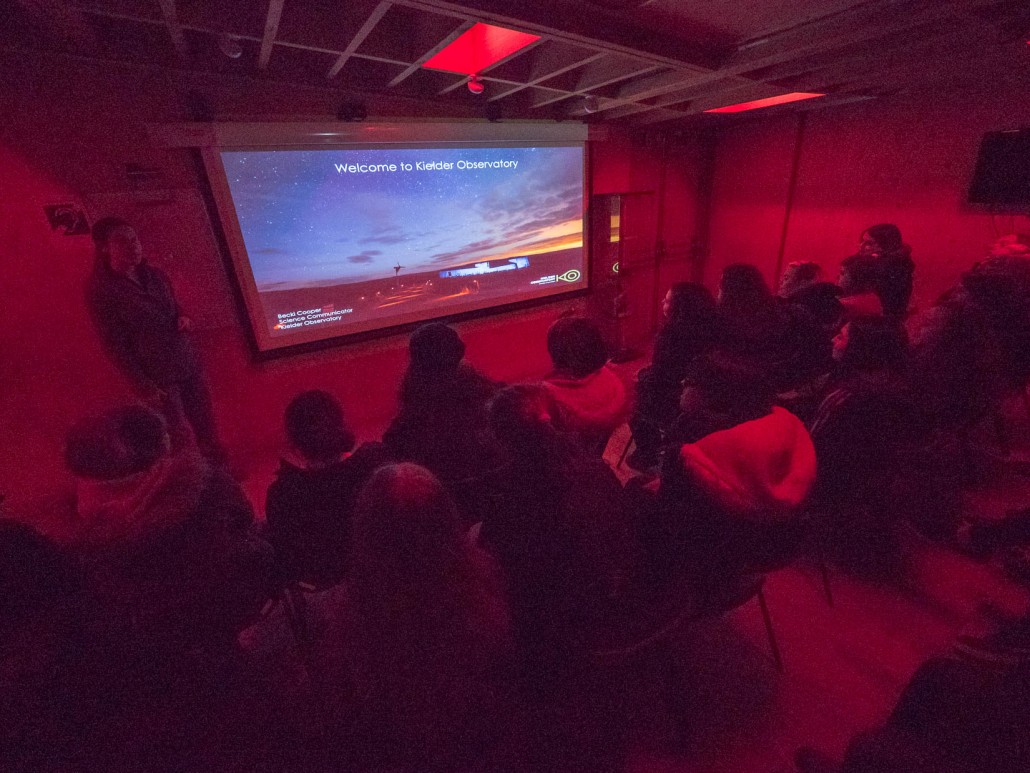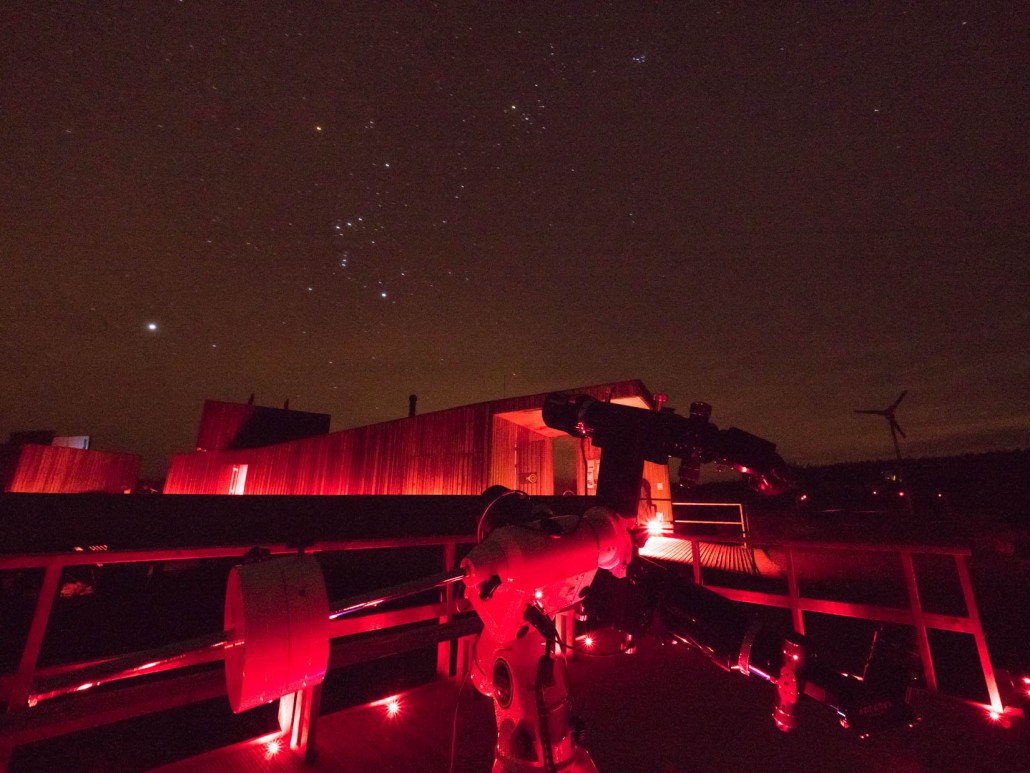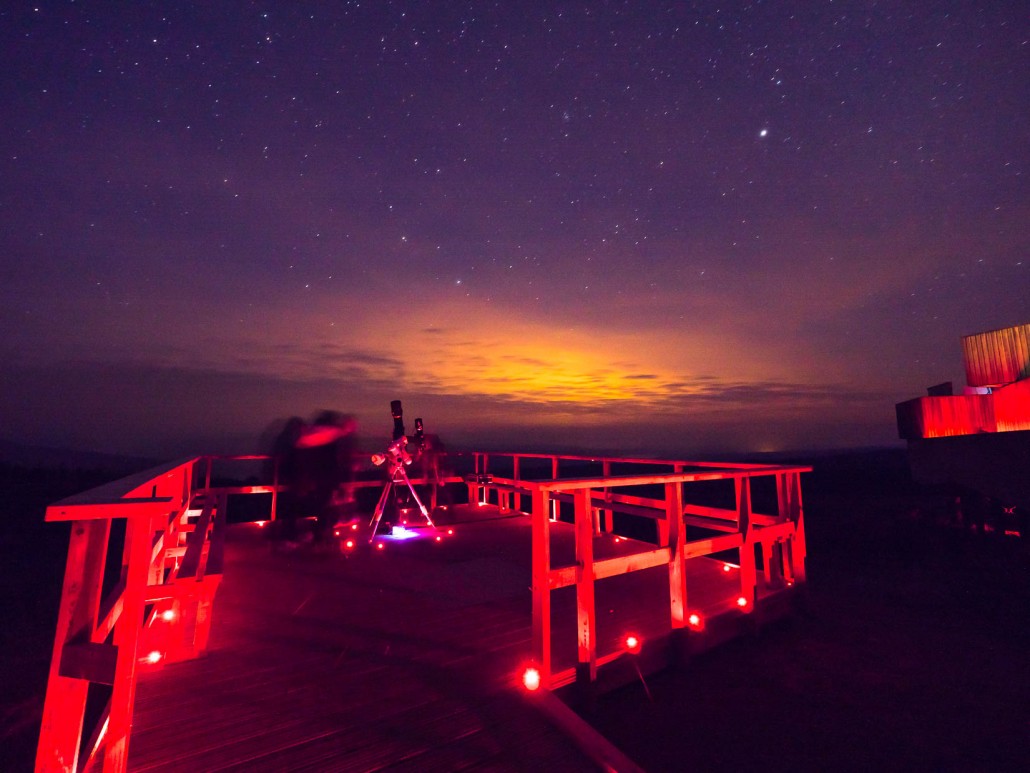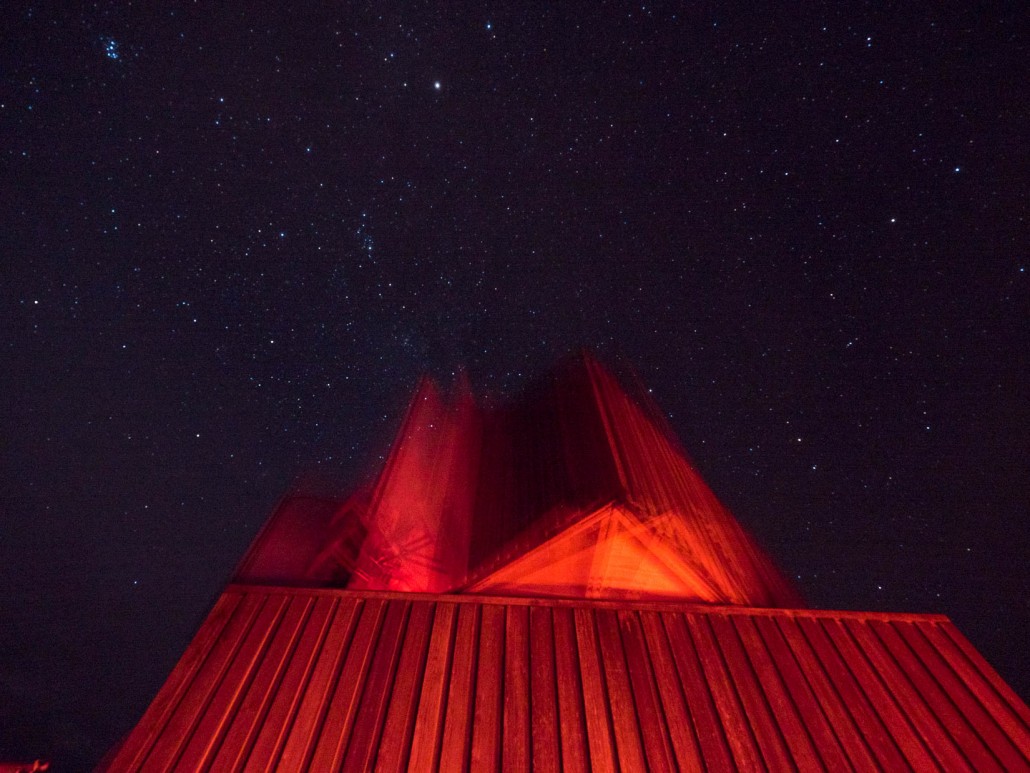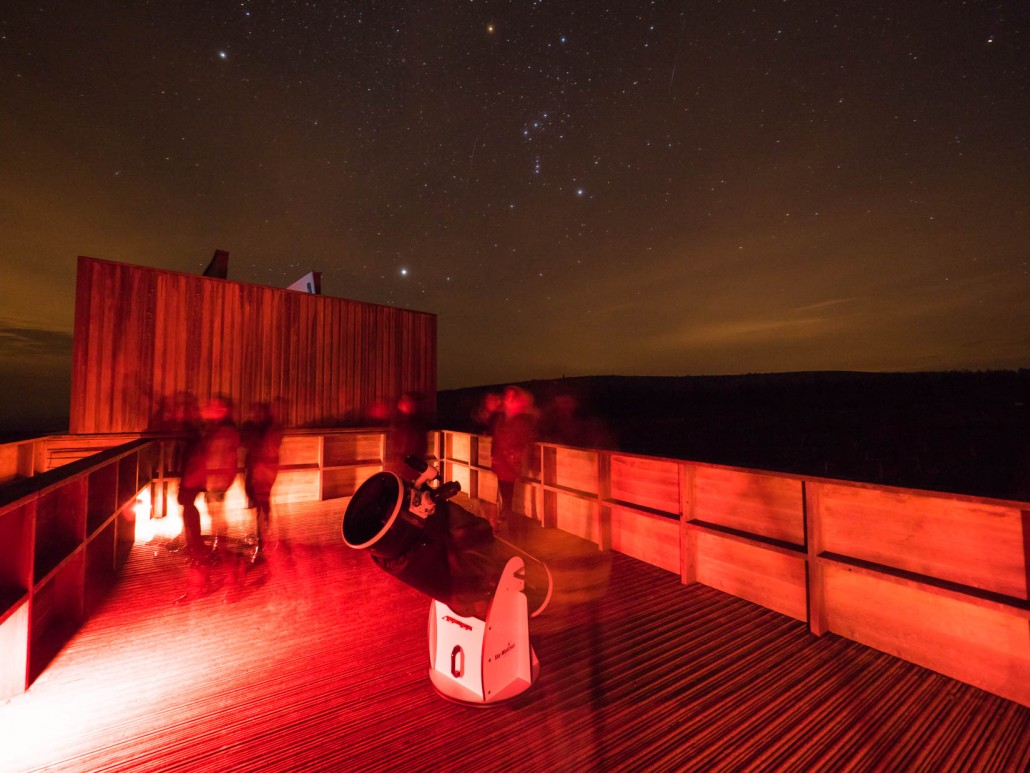Kielder Observatory trip – 26th February
Another month, another four schools, another 30 students; we seem to be making a habit of trucking people up to the Kielder Observatory. No snow this time, so our intrepid driver Steve bounced us up the track, and we managed to get some good observing in before the high cloud closed over. Luke from the Observatory then gave us a joyous romp through the exciting bits of astronomy and cosmology (absorption spectra! Woo! — no, really, I did go a bit giddy about absorption spectra), and all too soon we were back on the coach heading home.
The thin cloud layer and absent moon made for a relatively lousy night for photography, so there aren’t many shots:
Here’s Becki welcoming us to the Observatory, as we huddle in the one vaguely-warm part of the site and get properly dark-adapted:
Luke’s observing station, with 3- and 5-inch refractors set up and ready to go:
…and a group observing from that station, a few minutes later:
The 16” Reflector was in use. Here it is slewing across the sky while my shutter was open:
…and here’s an arty shot of the housing. The smudge of stars left of centre is – if I’m not mistaken – the Pleiades cluster.
Finally, my best shot of the night: Becki’s observing group out on the deck, with Orion directly above the telescope. Top left of Orion is Betelgeuse, looking much more red than Rigel, down the bottom-right of the constellation.
As ever, it’s quite a trek out to the Observatory (as Becki put it: Kielder is the most remote village in England, so the Observatory is outside the most remote village), but it’s well worth it, particularly if you’re lucky with the weather. Keep an eye on Kielder’s Events page (or this handy availability checker) and book yourself into a session!
Big thanks to the Observatory staff, and we’ll hope to be back again soon.

